“How do you decide where to put drawer pulls?”
History, hardware, and human preference all come into play when making these choices.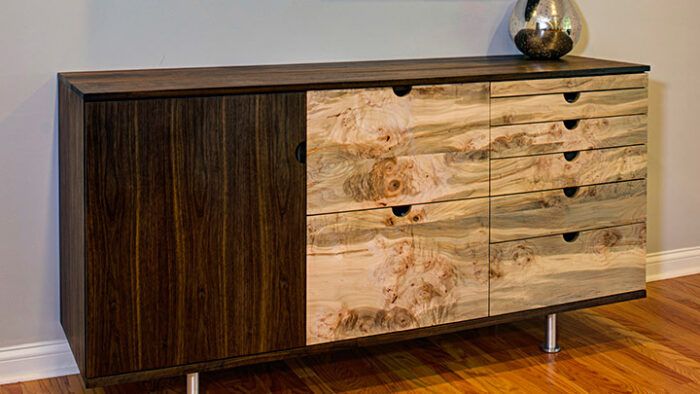
A reader recently asked how I choose where to put pulls on drawer faces—an apparently simple question to answer, but depending on your hardware and circumstances, not so much. Here are the main considerations I take into account, ranked by their importance (at least, their importance in my own work).
Period style
If you’re working in a particular period style, follow examples in antique pieces of comparable formality. In the case of built-in furniture, follow the proportions of original built-ins; for example, if you’re building cabinets for a utility room such as a laundry, bathroom, or kitchen, look for extant original work and let that be your guide. If your piece is freestanding, look at comparable pieces.
Proportions of old furniture and cabinetry aren’t always readily pleasing to contemporary eyes, but that’s part of what gives those old pieces their particular character. For instance, sometimes pulls appear far too close to a drawer face’s ends, like a person with exceptionally wide-set eyes. I personally find it worthwhile to challenge my aesthetic preferences in such cases; I often learn something about the historical influences on a style. Especially in the case of built-in work, following the pattern of original pieces will help your work blend in with its architectural context.
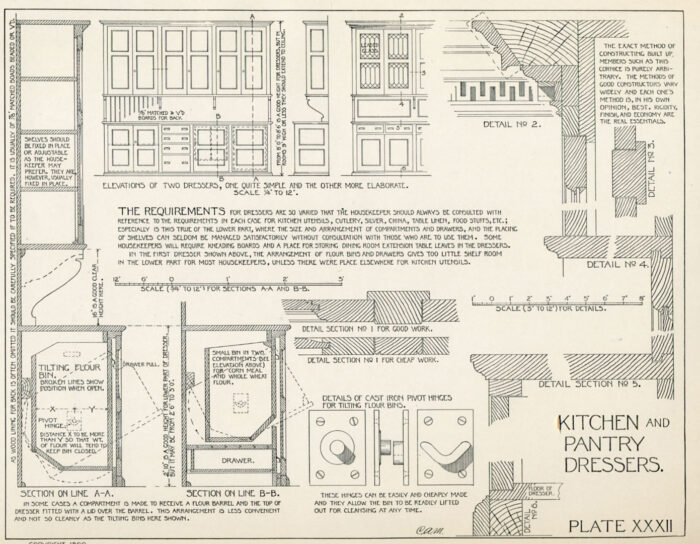
One pull or two?
The same rule about tension that I will elaborate on next applies, but considering that a centered pull will result in even tension on both slides, a single pull is always in principle fine. But it’s sad to have a single pull on a drawer that’s, say, 30 in. wide; it looks forlorn, like a little party island in the middle of an ocean. (I have never been invited to any of those parties.) If the pattern you’re following calls for a single pull, as some 1920s built-ins have, use one. But in general, most drawers over about 18 in. wide look better with two.
Constraints imposed by your drawer mounting system
Choosing pull locations is not just a matter of looks. It also calls for attention to the drawers’ operating system.
Drawers mounted on traditional runners with kickers and side guides (whether the latter are applied to a floating runner or comprised by the sides of a chest) have the fewest requirements regarding pull location, because they have lots of good side support. Of course, this is true only when the drawers are fitted well and don’t bind. As a rule, it’s best to put one pull in the center or space a pair evenly, as with the mounting systems mentioned below. But if you need to be extra creative and place a pull asymmetrically, doing so will work in cases where the drawer runs super-smoothly.
Those on side-mount ball-bearing slides should have pulls located either at the horizontal center or evenly spaced between the sides, because these slides are susceptible to problems, depending on the clearance between the drawer sides and the fixed part of the drawer slide. If there’s enough movement side-to-side, you may have trouble keeping the drawer-attached part of the slide in its housing.

Drawers on Blum Tandem slides should also have their pulls located so that tension on the drawer is equalized when it’s opened, so put these pulls either at the center (in cases with a single pull) or space them at the same distance from each end of the drawer.
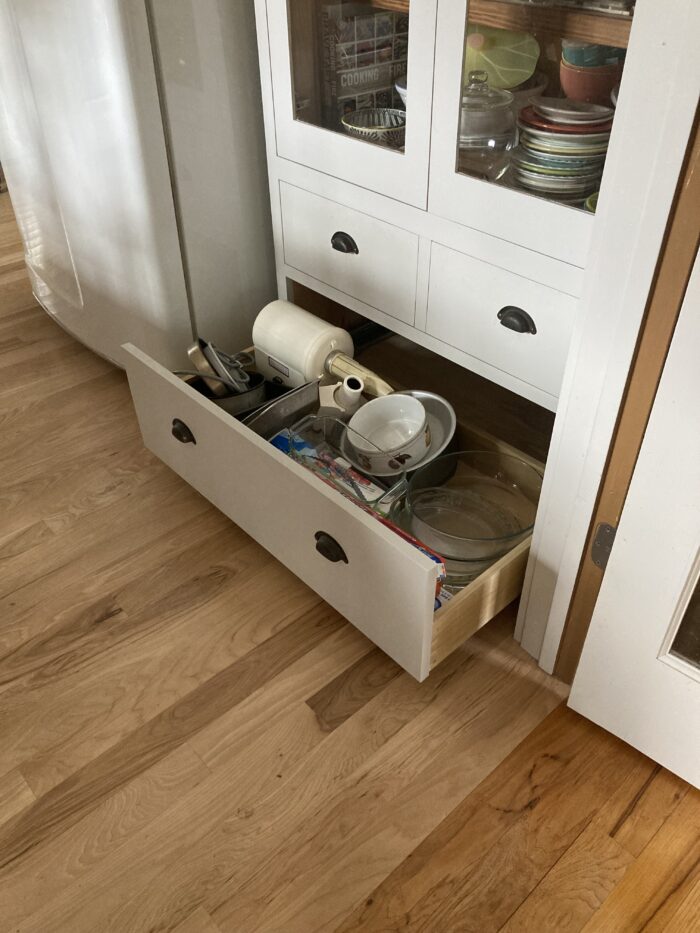
Human behavior plays a part here, as in most things. It’s tempting to open a drawer by just one pull, especially when your hands are full of things you’re going to put away in the drawer. In practice—and with practice—you can open a wide drawer on Blum Tandem slides with just one hand. If you’re going to open wide drawers with just one hand and your pulls are spaced wide apart, consider adding the Blum lateral stabilizer set (ZST.686TU01), which does away with any lateral play and firmly connects the left and right runners for smooth operation. The lateral stabilizer set works with drawers up to 53 in. wide. (Why would anyone have a drawer this wide? Some people want them below “4-foot” cooktops. To be precise, these are drawers with a “maximum cabinet opening” of 53-7/32 in.) The main constraint imposed by Blum Tandem slides does not concern the width, but the load. Standard slides are rated for 90 lb., including the weight of the drawer itself. I have used these slides for drawers up to about 46 in. wide without problems, but if your drawers are more than 36 in. wide and you want to be on the safe side (especially important if your clients need to store stacks of books, bricks, or cast-iron cookware in their drawers), upgrade to the heavy-duty Tandem runners. (Thanks to Chris Muck at Blum Research & Development for adding to my knowledge about Blum Tandem slides, which I have been using since 2007.)
A note about proportions
When you want drawer pulls to be centered vertically on drawer faces, you need to take into account the perspective that users will have on the drawers. If a drawer is at eye level (which is rare, because the contents would be virtually invisible unless you stood on a stool), you could put the pulls at the vertical center and have them appear as such. But thanks to perspective, the higher your eyes get from the position of the drawer—think of a four-drawer chest of drawers that stands on the floor—the lower a drawer pull will appear, relative to the height of the drawer face. I don’t subscribe to any specific rule about this but take my guide from the architectural context and depend on my own eye, checking with the client(s) that their eyes are happy with my recommendation.

Personal aesthetics
As with most design decisions, your (or, if you’re a professional who does custom work, your client’s) eye will be the final judge. If your client has listened to your arguments for putting pulls at position A and still insists the piece looks better with them at position B—and you would like to be paid—I would advise you to swallow your preference and follow the client’s wishes.
—-Nancy Hiller operates NR Hiller Design, Inc. and is the author of several works, including Kitchen Think. Her most recent book is Shop Tails.
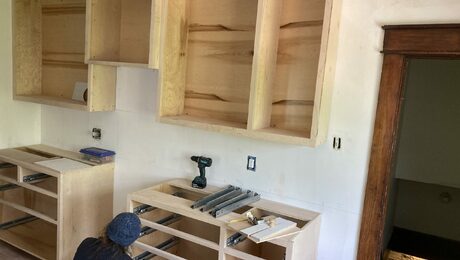 |
Why I fit kitchen cabinet doors and drawers on site |
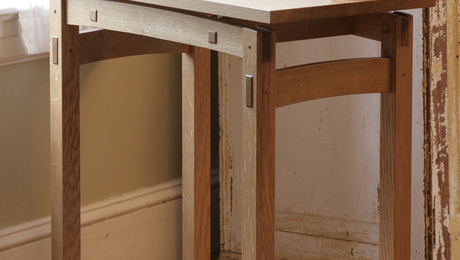 |
Drawer pulls in tight spaces |
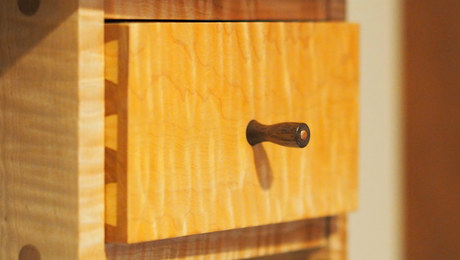 |
Drawer and Door Pulls: Our Editors’ Favorites |





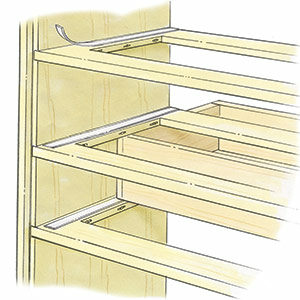













Log in or create an account to post a comment.
Sign up Log in